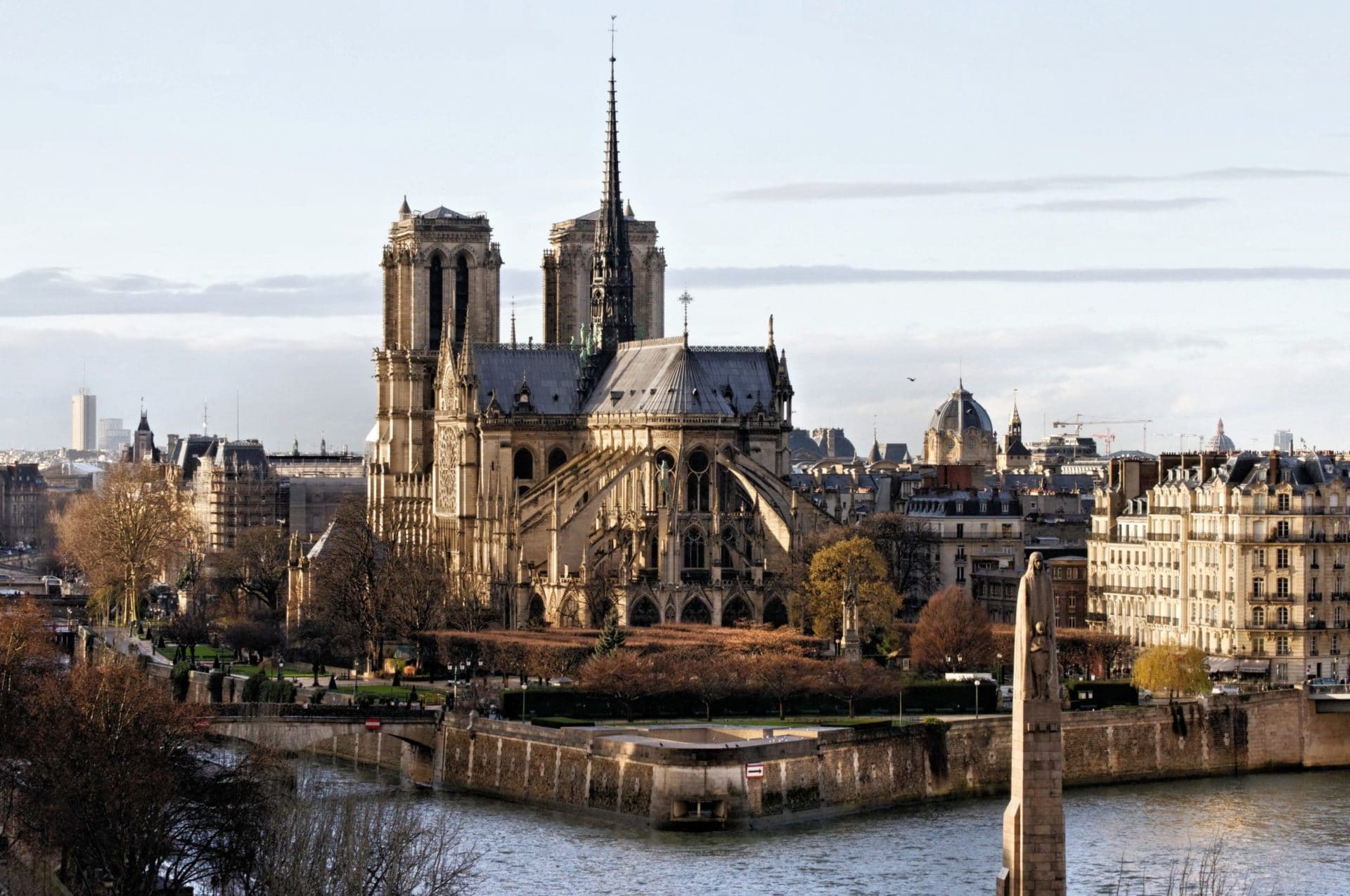Notre-Dame Cathedral is a masterpiece of Gothic architecture in France. Its construction spanned two hundred years, beginning in the middle of the 12th century, with modifications made in the 18th century and a major restoration project carried out in the 19th century.
5 Major Phases of Construction
Phase I: Initial Construction
Mid-12th century to mid-13th century
Phase II: Modifications and Adornments
Mid-13th century to mid-14th century
Phase III: Ongoing Modifications and Improvements
When artistic and architectural tastes evolved during the Renaissance, the Gothic style of Notre-Dame Cathedral fell out of favor. Renewed interest in the cathedral came from King Louis XIII in the 17th century, when he placed the crown of France under the protection of the Virgin Mary. He wanted to make changes to the cathedral as a sign of his devotion. These modifications took place at the beginning of the 18th century under the reign of King Louis XIV and continued under his son, Louis XV. Further changes were made under the reign of Louis XVI, as the cathedral was considered too dark and its entrance too narrow.
Phase IV: Major Restoration
By the 19th century, Notre-Dame Cathedral had fallen into disrepair and was in dire need of major restoration. Victor Hugo sounded the alarm in his novel The Hunchback of Notre-Dame, which brought renewed interest in the cathedral and its fate. In 1843, Jean-Baptiste Lassus and Eugène Viollet-le-Duc won a competition to lead the restoration of Notre-Dame Cathedral, which began in 1844. When Lassus died in 1857, Viollet-le-Duc continued the momentous project on his own.
Viollet-le-Duc’s restoration also included structural changes intended to get closer to the cathedral’s original form. As part of the works, he recreated the gallery of the kings that had disappeared, integrated new decorative elements such as chimeras and he built a new spire to replace the one that had been removed in the 1780s. While these additions are well-known around the world today, they were sometimes criticized by Viollet-le-Duc’s contemporaries.
The restoration took place from 1844 to 1864, with a break between 1851 and 1859, due to lack of financial resources. Following this vast project, the cathedral did not undergo further architectural modifications, only maintenance in the 20th century.
Phase V: Rebuild and Restore
Apart from cleaning the cathedral’s western façade in the 1990s, Notre-Dame Cathedral did not have any significant restoration work in over 150 years. As a result of time, weather, pollution and the inferior quality of stone used in the 19th century restoration, the cathedral was again in dire need of repair. To address these critical conditions, a second major renovation project was launched by the French government in 2018.
On April 15, 2019, the entire scope of the project changed when a devastating fire broke out under Notre-Dame Cathedral’s roof. The fire destroyed the spire and caused extensive damage to the roof, vaults and interior of the cathedral.
Now, the mission is to rebuild Notre-Dame Cathedral. French President Emmanuel Macron has declared a deadline of opening the cathedral to the public by 2024, with renovation and restoration efforts continuing in the years beyond.
